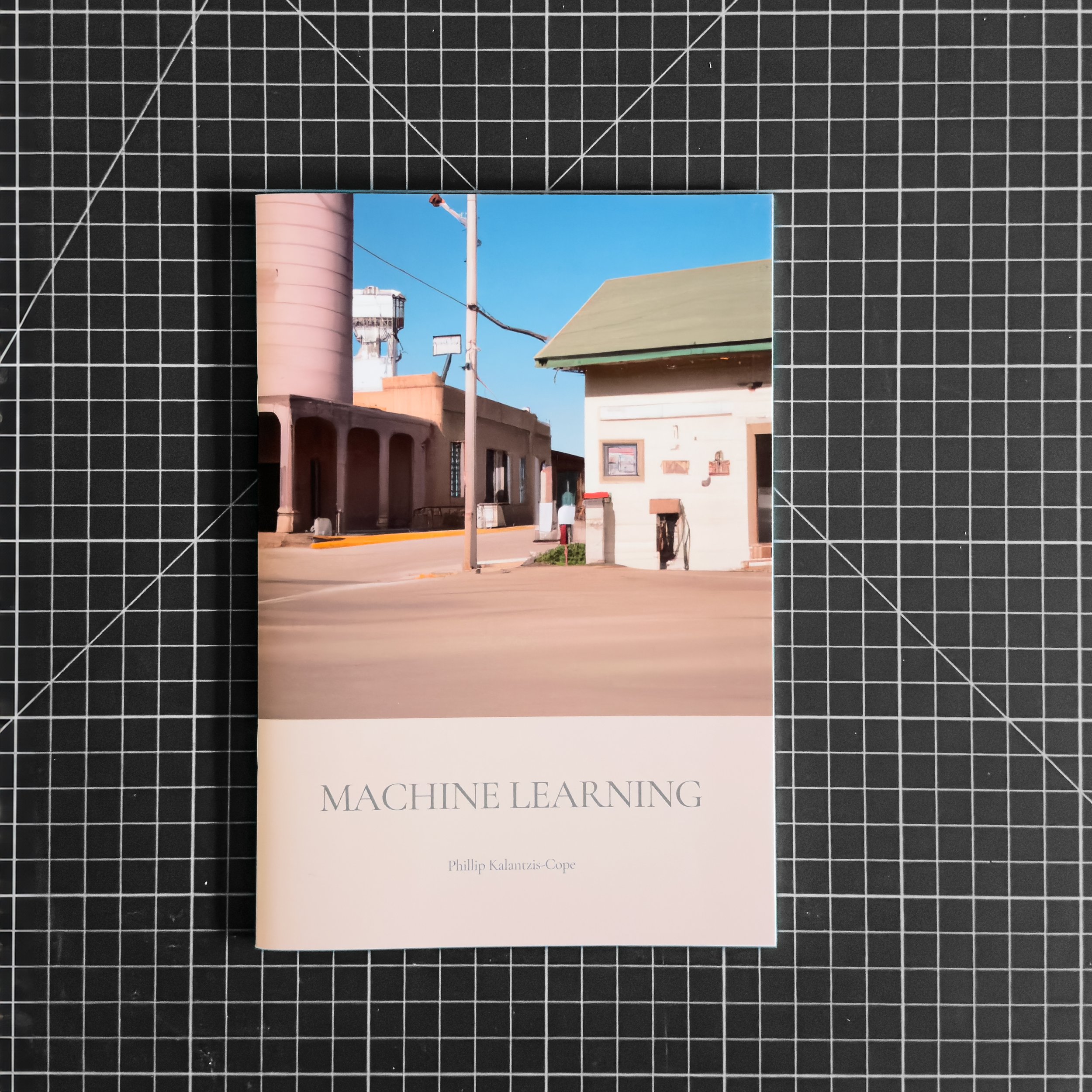 Image 1 of 10
Image 1 of 10

 Image 2 of 10
Image 2 of 10

 Image 3 of 10
Image 3 of 10

 Image 4 of 10
Image 4 of 10

 Image 5 of 10
Image 5 of 10

 Image 6 of 10
Image 6 of 10

 Image 7 of 10
Image 7 of 10

 Image 8 of 10
Image 8 of 10

 Image 9 of 10
Image 9 of 10

 Image 10 of 10
Image 10 of 10











Machine Learning, Phillip Kalantzis-Cope
“Feedback is a method of controlling a system by reinserting into it the results of its past performance. If these results are merely used as numerical data for the criticism of the system and its regulation, we have the simple feedback of the control engineers. If, however, the information which proceeds backward from the performance is able to change the general method and pattern of performance, we have a process which may well be called learning.
Norbert Wiener. The Human Use of Human Beings: Cybernetics and Society (1950)
****
In “Machine Learning,” Phillip Kalantzis Cope deploys post-industrial techniques to make meaning from industrial and rural landscapes. The book frames a collision of new and old by applying artificial intelligence techniques to his images. The new images are created in the “eye” of artificial intelligence software; interpreting and recreating often overlooked, disregarded utilitarian structures and out-of-the-way corners. This book draws us to consider emergent visual economies. Who is the image maker when we use such tools–humans or machines? And what do these tools and their algorithms show us that we have not already seen ourselves?
——————
Phillip Kalantzis-Cope attempts to make sense of techno-social relations in everyday life and visual culture. His work has been published, exhibited internationally, written about, and can be found in public and private collections.
——————
Edition: 100
Page Count: 48
Dimensions: 5.8” x 8.3”
Format: Saddle Stitch
ISBN: 978-1-7355008-6-7
——————
PRESS / LINKS:
“Feedback is a method of controlling a system by reinserting into it the results of its past performance. If these results are merely used as numerical data for the criticism of the system and its regulation, we have the simple feedback of the control engineers. If, however, the information which proceeds backward from the performance is able to change the general method and pattern of performance, we have a process which may well be called learning.
Norbert Wiener. The Human Use of Human Beings: Cybernetics and Society (1950)
****
In “Machine Learning,” Phillip Kalantzis Cope deploys post-industrial techniques to make meaning from industrial and rural landscapes. The book frames a collision of new and old by applying artificial intelligence techniques to his images. The new images are created in the “eye” of artificial intelligence software; interpreting and recreating often overlooked, disregarded utilitarian structures and out-of-the-way corners. This book draws us to consider emergent visual economies. Who is the image maker when we use such tools–humans or machines? And what do these tools and their algorithms show us that we have not already seen ourselves?
——————
Phillip Kalantzis-Cope attempts to make sense of techno-social relations in everyday life and visual culture. His work has been published, exhibited internationally, written about, and can be found in public and private collections.
——————
Edition: 100
Page Count: 48
Dimensions: 5.8” x 8.3”
Format: Saddle Stitch
ISBN: 978-1-7355008-6-7
——————
PRESS / LINKS:
“Feedback is a method of controlling a system by reinserting into it the results of its past performance. If these results are merely used as numerical data for the criticism of the system and its regulation, we have the simple feedback of the control engineers. If, however, the information which proceeds backward from the performance is able to change the general method and pattern of performance, we have a process which may well be called learning.
Norbert Wiener. The Human Use of Human Beings: Cybernetics and Society (1950)
****
In “Machine Learning,” Phillip Kalantzis Cope deploys post-industrial techniques to make meaning from industrial and rural landscapes. The book frames a collision of new and old by applying artificial intelligence techniques to his images. The new images are created in the “eye” of artificial intelligence software; interpreting and recreating often overlooked, disregarded utilitarian structures and out-of-the-way corners. This book draws us to consider emergent visual economies. Who is the image maker when we use such tools–humans or machines? And what do these tools and their algorithms show us that we have not already seen ourselves?
——————
Phillip Kalantzis-Cope attempts to make sense of techno-social relations in everyday life and visual culture. His work has been published, exhibited internationally, written about, and can be found in public and private collections.
——————
Edition: 100
Page Count: 48
Dimensions: 5.8” x 8.3”
Format: Saddle Stitch
ISBN: 978-1-7355008-6-7
——————
PRESS / LINKS:

